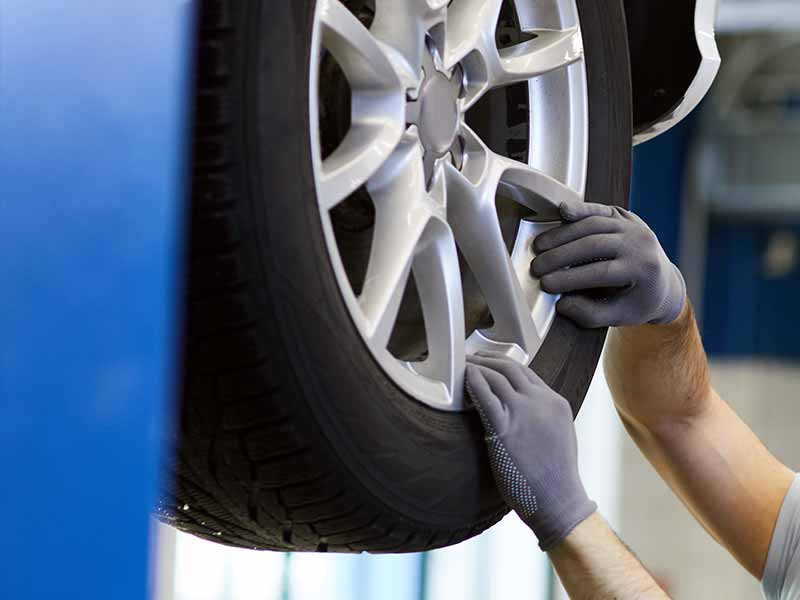Tires unfortunately don’t last forever. They wear down, can suffer damage, and can dry rot over time due to exposure to ozone and sunlight.
Signs you need new tires such as sidewall bulges, cracking, and low tread level, need to be checked for on a regular basis.
A visual inspection can usually be all that is required.
When Do You Need New Tires
There are 3 primary reasons you may need new tires – tread depth, damage, and age:
- Tread Depth
Worn tire tread is the main reason to replace your tires. When your tire’s tread has worn down to the wear bars, your tires must be replaced.
It’s recommended that you replace your tires before this point however. You can use the penny test to gauge tread depth by comparing the tread block height to the position of Lincoln’s head.- Tire Damage
Sidewall bulges due to broken belts from potholes and curb strikes are common problems. Uneven wear can also ruin tire tread and require new tires. Gouges, gashes, cuts, and severe tears may cause a tire to be too unsafe for continued use.- Tire Age
Old tires can lead to tire failure and a catastrophic blowout. Tires used daily should be replaced after 6 years to avoid failure due cracked rubber caused by dry rot.
Knowing when each of these is present to the point that your tires should be replaced is critically important.
Let’s take a closer look.
Wear Bars Are The Same Height As Tire Tread
Wear bars are tread wear indicators molded into the tread pattern of your tires. They are found at the bottom of the main grooves of most tires.
These wear indicators are 2/32″ tall. When your tire’s tread has worn down to where it is flush with the wear bars it means that your tires have reached the minimum acceptable tread depth and must be replaced.
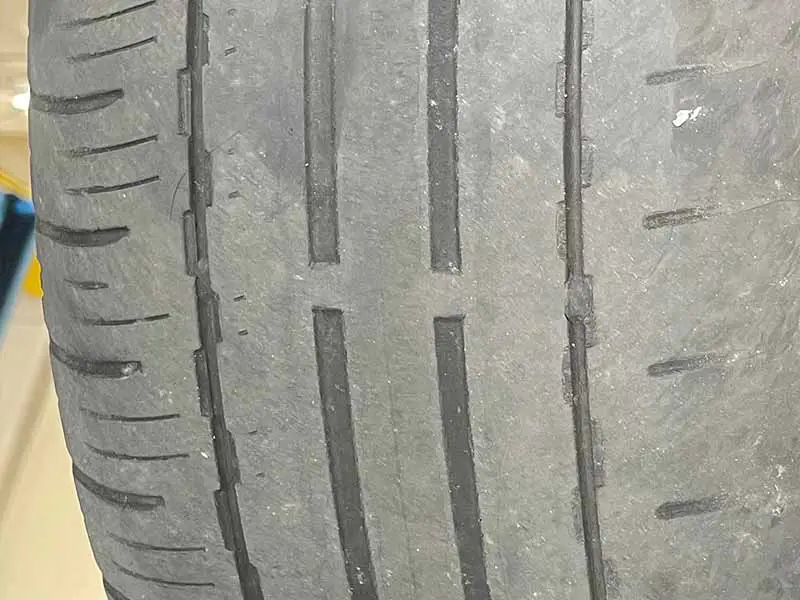
Uneven Tire Tread Wear
Uneven wear can make it necessary to replace your tires if not caught and corrected early. Uneven wear patterns can cause steering wheel vibrations or even vibrations that can be felt through the floorboard or seat.
Measuring tread at several points around your tires can help you identify some different uneven tread wear problems. Although many can be easily seen with a visual inspection.
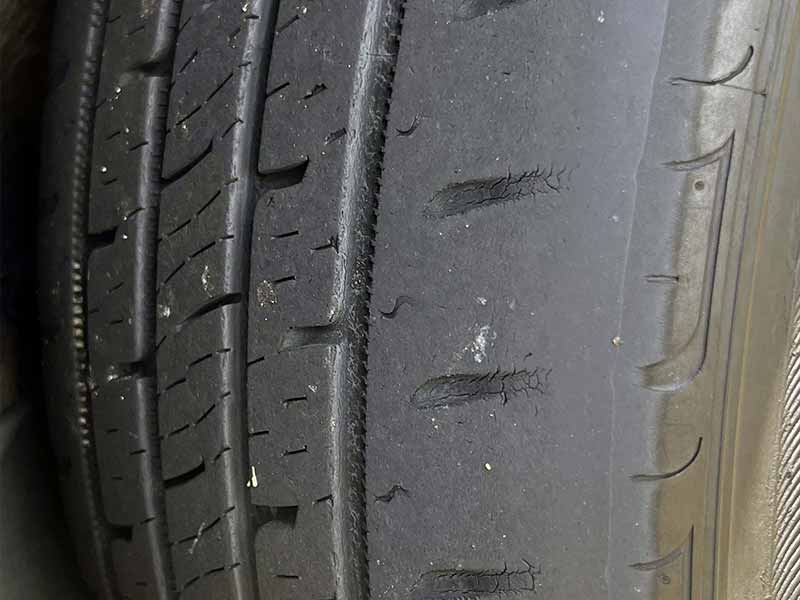
Sidewall Bulges And Other Damage
Sidewalls often suffer damage for different reasons. As the outer side of your tire, they often take the full force of curbs and potholes that can damage the internal structure and cause sidewall bubbles or scrapes and rubs that can rip and tear at the outer layers of the sidewall.
Minor sidewall damage may only be cosmetic and not be an issue. More serious damage such as bulges or cords showing through gashes or gouges can seriously compromise the structure and make continuing to use the tires unsafe.
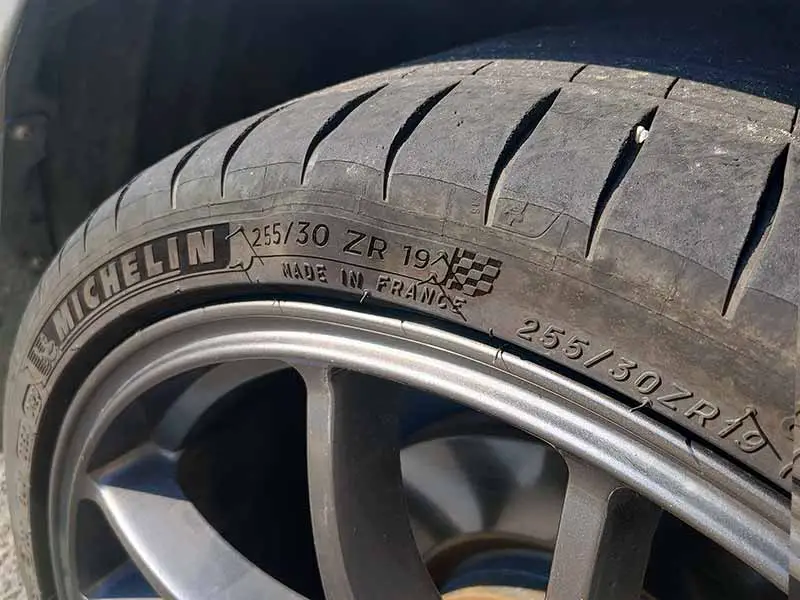
Cracked Rubber Due To Age
Tires have a shelf life of 6 years due to ozone and ultraviolet sunlight damage that builds up and degrades the rubber over time. As a tire gets older the exterior surface will begin to dry rot and cracks form.
Very fine cracks may only be cosmetic and not a concern. More severe cracks may mean the tire rubber has become too brittle and the stresses of normal tire use may cause it to fail if pushed too far.
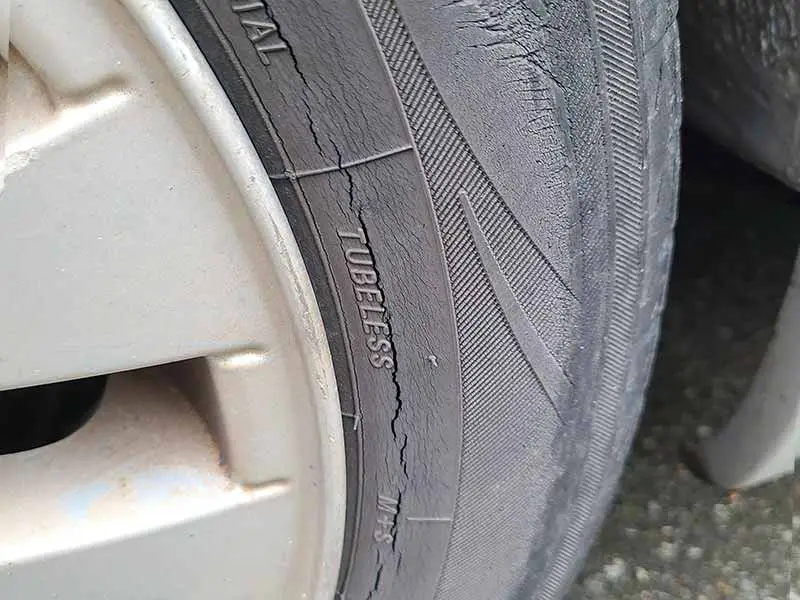
You can find the manufacturing date of your tires from the DOT Tire Identification Number on the sidewall of each of your tires.
The tire date code is the last four digits of the DOT TIN located on the sidewall.
- The first two digits represent the production week.
- The last two numbers represent the year the tire was produced.
No Longer Able To Maintain Air Pressure
If your tire pressure drops so rapidly that it needs air added to it more than once per month, you may need new tires.
Damaged wheels or leaky valve stems can be sources for air pressure to leak that will need to be checked first, but if they are good and your tires are old and worn, a new set of tires may be required.
How To Tell If You Need New Tires With A Penny Or Quarter
A Washington quarter or a penny are convenient tools for measuring tire wear. By placing Washington or Lincoln’s head upside down in the deep grooves of your tread pattern you can easily gauge how much tread wear remains.
The penny test is better in my opinion since Washington quarters are harder to find these days and 2/32″ and 4/32″ align perfection with the top of Lincoln’s head and the top of his forehead.
Penny Test
- Place a penny upside down in the deep tread grooves between tread ribs.
- If all of Lincoln’s head is visible you should replace your tires immediately.
- If all of Lincoln’s forehead is visible, you should consider replacing your tires soon.
- If part of Lincoln’s forehead is obscured by your tire treads, your tread is at an acceptable depth.
Quarter Test
- Place a quarter upside down in the deep tread grooves between tread ribs.
- If all of Washington’s head is visible you should replace your tires.
- If part of Washington’s head is obscured by your tire treads, your tread is at an acceptable depth.
Dangers Of Driving With Worn Tires
Worn tires increase stopping distances, are more likely to hydroplane, and are more susceptible to punctures.
Stopping Distance
Stopping distance on wet road conditions increases as your tires wear down. As your tire wear approaches the minimum legal tread depth, stopping distances begin to increase even more rapidly.
The difference in stopping distance between new tires with a tread depth of 10/32″ and worn tires with only 4/32″ of remaining tread wear is 50% longer distances.
The difference in stopping distance between a worn tire at 4/32″ and the minimum legal depth of 2/32″ is an additional 50% longer stopping distance for a total of twice the stopping distance of a new tire.
Hydroplaning
Hydroplaning is a situation where your tires can’t move water out from underneath your tires fast enough and the tires lose contact with the road surface. Your entire car or truck lifts up and glides on a cushion of water. The sensation is like sliding on a sheet of ice.
Even new tires can hydroplane if you’re driving too fast. Speed is the biggest cause of hydroplaning. You should always reduce speed during rain and on wet surfaces.
Tread depth also makes a big difference in how likely you could experience hydroplaning. New tires are capable of moving enough water to prevent hydroplaning at highway speeds on wet roads. Tires with only 2/32″ of tread remaining can hydroplane at speeds as low as 35 mph.
Tire Punctures
New tires have the most puncture resistance due to the thicker amount of rubber between the road surface and the pressurized interior of the tire.
The lower you allow your tires to wear down the more you increase the risk of a puncture or even a catastrophic blowout.
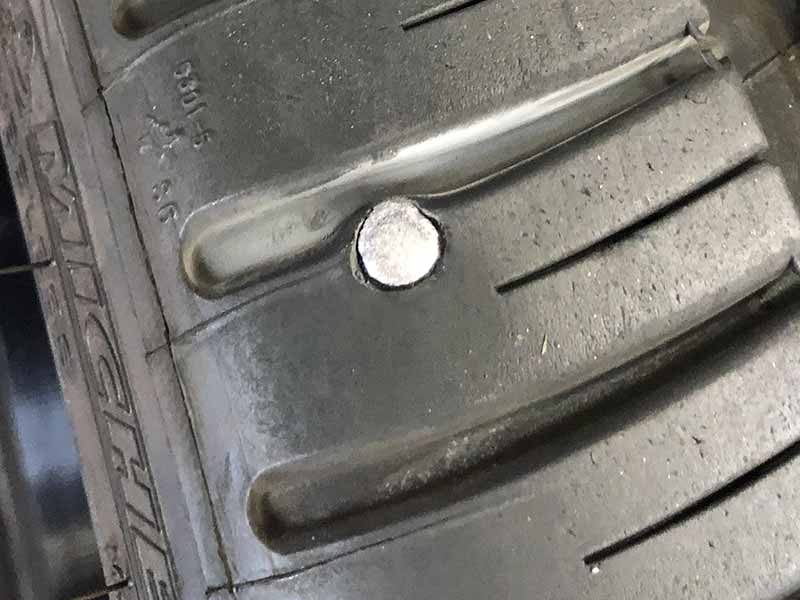
Resources
Below are some links you may find helpful when learning about tires
Final Thoughts
Signs you need new tires shouldn’t be ignored. Now that you know what could be signs you need new tires, don’t procrastinate. Tire performance and safety depend on the condition of your tires.
Be sure they are visually inspected monthly and replace them after six years no matter how good they look or how much tread they have remaining.
Good luck and happy motoring.
